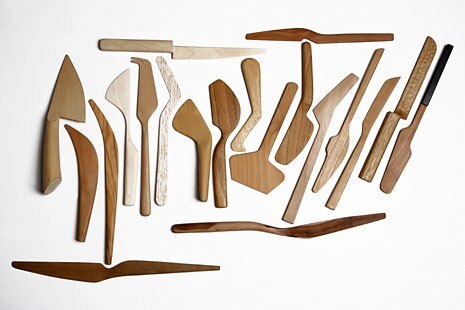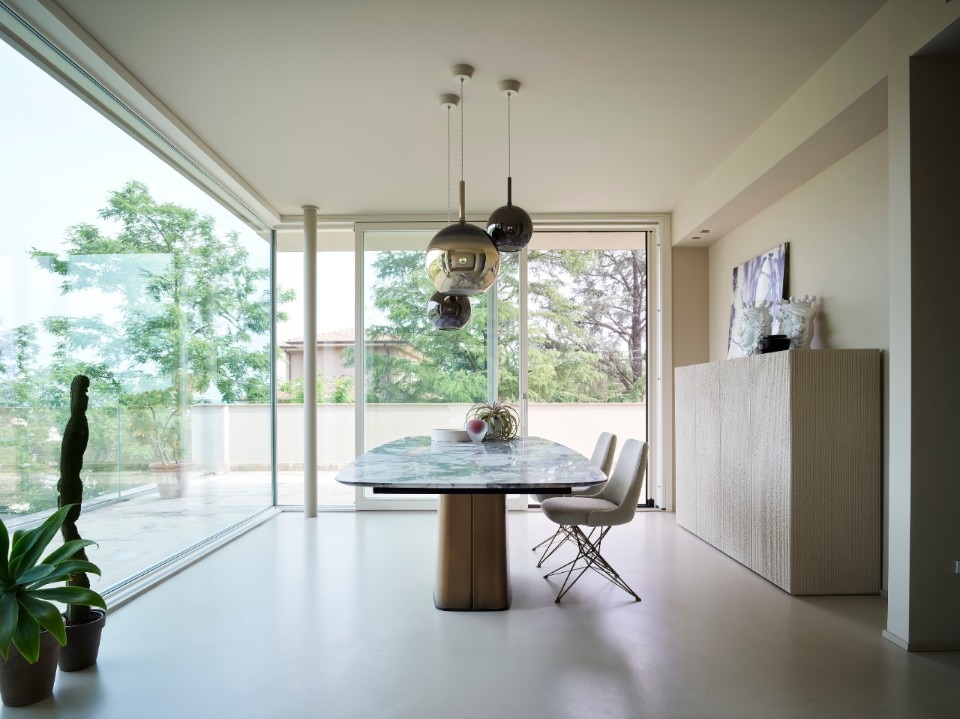A free-standing, therefore mobile, kitchen, made from a self-supporting skeleton that forks into braces (“bretelle”) to which the cupboards are hung without the need for wall fixings. The rest is all made from standard materials, from handles of the domestic appliances to the ironmongery, an assemblage of ready-made components. Bretel can grow in a modular fashion, configured in various ways but always standing on its own feet. Looked at another way, it is a kitchen with one eye to the 1950s version of the archetypical credenza and another to the contemporary trend for modular systems. A cross-eyed design approach, that Iacchetti cultivates like a precious background hum. And so to another story, quite different but not incompatible. A story of knives. It happened in the summer of 2007, thirty days away from it all – brief, budget, technology and client – to design in perfect solitude a knife a day, carve from exotic and local woods, amid sandpaper, beeswax and chisels and bring back the buzz of the language of design to zero copyist writing interference. That is a return to the roots of savoir-faire as a carver, passed down two generations, neglected in collective and militant seasons (see Coop) and here retrieved, dealing with a primordial object. Here the words of Odoardo Fioravanti explain well the reasons: “A slender journey to design new shapes for the knife, the tool among cutlery that remains the closest to an irreplaceable function for survival”. The result is an extraordinary catalogue of curves, continuous, offset, not without homages (see Giovanni Sacchi), all disconnected from any precise function. Even though you can read it between the lines.
And so, despite everything, the knives found a production outlet, with Coltellerie Berti, who by tradition respect original hand crafting. So chopping knives, bread knives, chef knives, pesto, kitchen, fillet and de-boning knives, knives for cooked and raw meats, for stabbing? We don’t know, it’s for us to find, in this “use-less” design the function that follows the form. We only know that once produced they can share the same places with Bretel, bring together industrial economies and handmade uniqueness, and so distribute well the weight. Thinking about it, that cross-eyedness puts it all into focus.
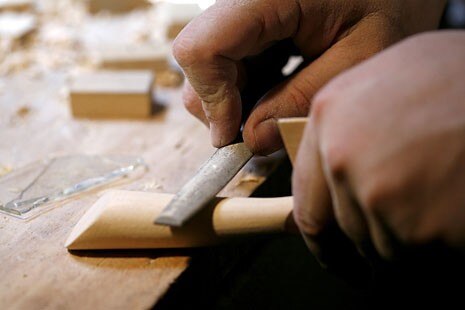
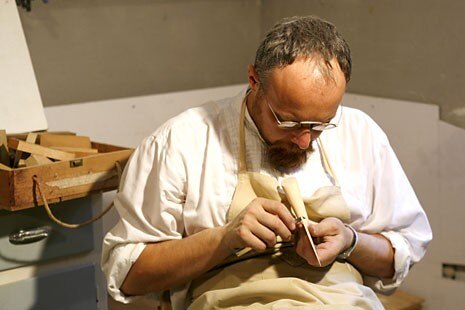
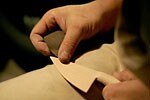
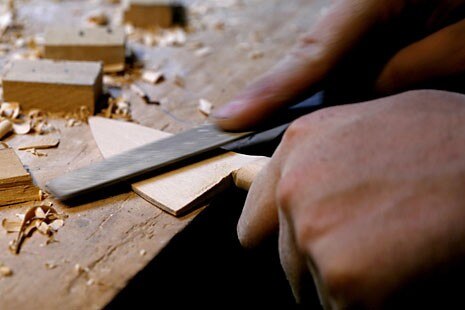
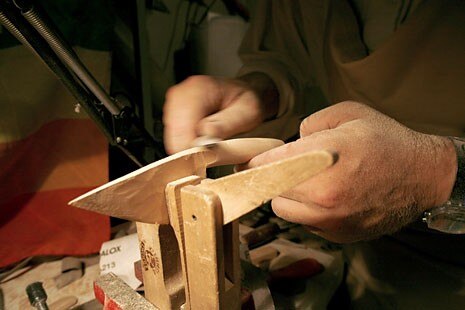
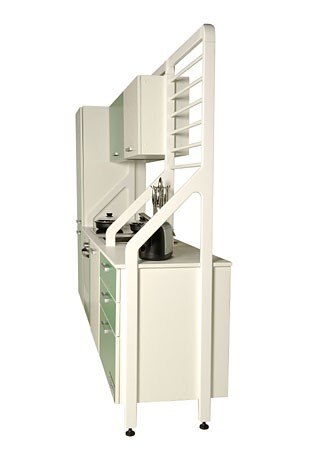
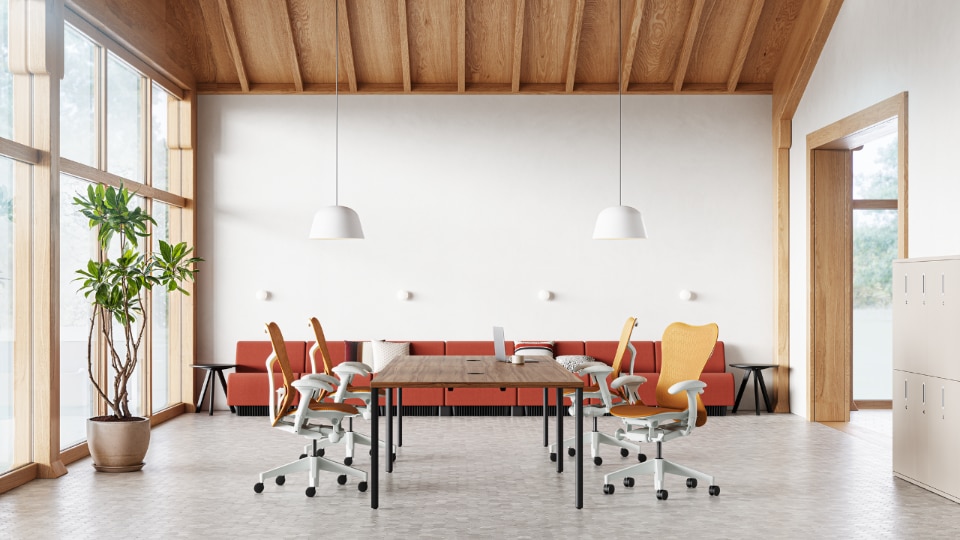
The Mirra 2 combines ergonomics and sustainability
Redesigned by Berlin-based Studio 7.5, the Mirra 2 chair from Herman Miller represents the perfect combination of function and innovation.


